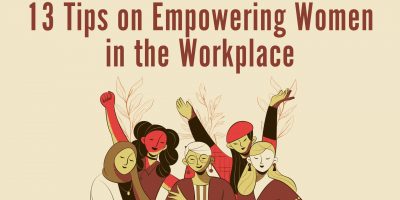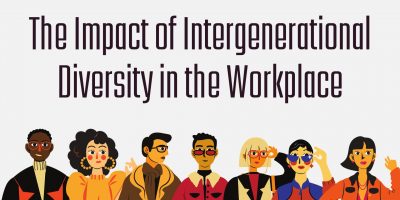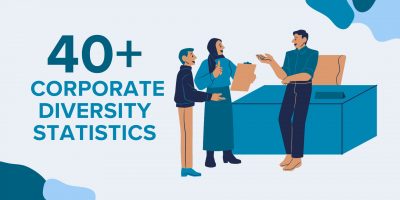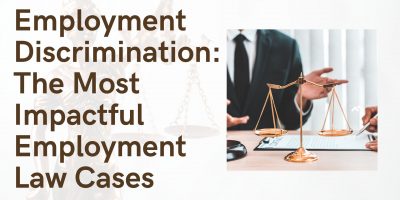
13 Tips on Empowering Women in the Workplace
From fostering inclusive environments to advocating for equal opportunities – elevate your organization’s commitment to gender equality with actionable advice.

“Gen Z doesn’t want to work.“
“Millennials are entitled.“
“Gen X is resistant to change.“
“Boomers are not tech-savvy.“
Generational stereotypes, positive or negative, are nothing new, but what happens when four different generations collide in one place?
In today’s diverse and dynamic workplace, generational multeity is a significant factor that shapes the dynamics and productivity of teams. However, stereotypes often hinder understanding and collaboration among these different age groups.
Between insensitive “OK Boomer” jokes and labeling Millennials as destroyers of the economy, ageism heavily resides in our society. Thus, the line between the usefulness of intergenerational diversity in the workplace and its drawbacks is thin.
For employers to ensure their employees and organization benefit from the age difference, let’s dive into this topic and analyze what it means to have a multigenerational labor force.
Intergenerational diversity in the workplace refers to the presence of individuals from different age groups, each depicting specific age-related characteristics.
Right now, the workforce consists of a small percentage of the Silent Generation, Baby Boomers, Generation X, Millennials, and Generation Z. Only a decade ago, Traditionalists or the Silent Generation were in larger numbers, and Gen Z was still far from the working age.
In another ten years, as the last of the Baby Boomers enter into retirement, the workforce will welcome a new set of employees – Generation Alpha.
As people come and go, each leaving a unique mark, the workplace continues to evolve. With every generation comes more diversity, and understanding unique characteristics is essential for fostering effective communication and collaboration.
Between the media scrutiny of Millennials and the meme-prone Baby Boomers, age discrimination is a significant societal problem that spills into the workplace. Although it’s more hostile towards older groups, this distinct bias doesn’t “discriminate” when it picks its targets. As such, it creates stereotypes, prejudice, and discrimination that can be felt in the workplace among every age group.
But why does this happen?
Usually, it stems from ignorance and lack of familiarity. Much like with other biases, we fear what we don’t understand.
For the first time, there are currently five different generations in the workplace. Each provides different values and experiences to the table, but can also bring new challenges.
The oldest is the Silent Generation, or the Traditionalists, who are well into their 70s and hold 2% of the workforce. According to Pew Research Center, in 2018, the remaining age demographics were:
From job loyalty to job hopping, understanding generational differences in the workplace demands a thorough overview of each generation.
Being born in a particular period of history makes us experience major societal events with a different intensity.
For example, growing up amid a digital boom heavily influenced the latest addition to the workplace, Gen Z. Although they all lived through it, older generations could never grasp the effect social media trends have on children and young adults or the overwhelming advancement of technology.
At the same time, most of this generation is too young to remember or be affected by events that shaped Millennials, like 9/11 or the Great Recession in 2007 and its aftermath.
Similarly, most of Gen X barely finished college when the stock market crashed in 1987. They also lived through multiple recessions of the 1970s, ’80s, and ’90s and saw the rise of the first personal computers but were never as affected by it as younger generations.
Their predecessors, Baby Boomers, on the other hand, grew up in the cold war, having been born in the aftermath of World War II and lived through the Great Depression.
Either positive or negative, these historical events, along with different parenting styles and other socioeconomic trends, contributed to creating individuals who hold different values and principles in the workplace.
Baby Boomers, born between 1946 and 1964, are known for their strong work ethic, dedication, and commitment to their careers. They bring extensive experience and knowledge to the workplace and value stability, loyalty, and face-to-face communication.
Some of their defining characteristics are:
Generation X, born between 1965 and 1980, is known for its independence, adaptability, and entrepreneurial spirit. They prioritize work-life balance, value flexibility, and are comfortable with technological advancements, but not as much as Millennials or Gen Z.
This age group is defined as:
Millennials, born between 1981 and 1996, are often considered to be tech-savvy, ambitious, and socially conscious. They usually seek purpose in their work, value collaboration and feedback, and embrace technology in their daily routines.
This age group is often referred to as job-hoppers since they’re most likely to leave a job, according to some sources. However, their reason for being at the forefront of the Great Resignation stems from the need to work flexibly, focus on their well-being, and share the same values as their employer.
Moreover, the Millennial workforce is more likely to aspire to open their businesses, making this generation:
Generation Z, born between 1997 and 2012, is the newest generation to enter the workforce. They are digital natives who grew up with technology as an integral part of their lives. Gen Z individuals are known for their innovation, entrepreneurial mindset, and desire for work that aligns with their values.
Like Millennials, they are often called job-hoppers, albeit they’re still a relatively new addition to the workforce and are figuring out what they want from an employer. Undeniably, this age group values their time and believes in work-life balance.
Their defining characteristics, for now, are:

The overview of the generations focuses more on their distinctive characteristics. After all, listing the unique features is much easier than finding similarities between these age groups. However, that’s not to say that we are entirely different from one another because of our age.
Although each generation has its unique attributes, it is essential to note that there are also similarities that bridge the gaps.
For example, we all value recognition, career opportunities, and a sense of purpose in the workplace.
One LinkedIn article by Dave Ulrich, a professor at the University of Michigan’s Ross School of Business, reveals seven familiar drivers across all ages of why people work, including:
The article further clusters them into three mutual drivers of employee experience:
Overall, acknowledging the resemblances and apprehending the distinctions helps foster understanding and collaboration among different age groups at work.
Although the majority agrees on areas like the importance of work relationships, learning, or having a purpose, there are ideas we don’t see eye to eye.
Based on whether companies properly manage intergeneration differences in the workplace, its effects can range from exceptionally good to terribly bad.
For example, when employers overlook the age difference, it can significantly impact employee dynamics and productivity. Such challenges range from communication barriers to severe bias in the workplace, disrupting teamwork and company progress. As a result, this can create tension and a hostile work environment.
However, when they put time and effort into understanding the needs of their workforce, businesses can benefit from their multigenerational employees.
Generational multeity can be advantageous in bringing much-needed diversity to the workplace. From a competitive edge to better retention, with the right approach, companies can reap the benefits and harness the full potential of their diverse workforce.
Age diversity holds immense significance in fostering a dynamic and thriving organizational culture. It brings together people with different perspectives and unique experiences, tapping into a pool of knowledge and fresh ideas.
Furthermore, it helps defy age-related stereotypes outside the workplace by promoting mutual respect and understanding among co-workers.
There are many benefits of generational diversity in the workplace. With the right approach, each contributes to creating a vibrant and forward-thinking workforce, ultimately aiding employers and employees.
Millennials and Gen Z employees are more adept at leveraging technology and embracing change. Integrating different perspectives, experiences, and knowledge from multiple generations could prompt efficacious problem-solving within teams.
Overall, having different age groups helps businesses to stay innovative, giving them a competitive edge in highly competitive markets.
Corporate diversity statistics reveal that, for 80% of employees, inclusion is an important issue, and 39% would leave their current employer for a more inclusive workplace.
Therefore, creating a work environment that values and appreciates individuals across all generations can increase employee retention while at the same time fostering higher levels of engagement and job satisfaction.
Research shows that inclusive teams are 35% more productive and earn their company 2.5 times higher cash flow per employee.
Like with innovation and problem-solving, organizations can tap into the creative potential of all employees by embracing diverse perspectives and approaches to work. In return, this could lead to higher productivity levels and a more vibrant work culture.
Intergenerational diversity encourages mixed teams to collaborate, share ideas, and capitalize on the group’s collective intelligence.
However, for this to happen, employers must overcome the barriers that come with the territory. Overall, discussing the benefits of intergenerational diversity in the workplace goes hand in hand with understanding and managing generational challenges.

Growing up with specific values, adjusting to different communication styles, and having unique work approaches can be challenging when five different generations collide within one workplace.
Be it from experiences, cultural shifts, or societal norms, these obstacles translate at work as collaboration barriers, conflict, and hostility.
Therefore, alongside the benefits, generational challenges in the workplace need to be addressed with the same urgency to foster understanding and acceptance among different age groups.
In the early 2000s, when the internet was introduced to phones and communication changed drastically, Baby Boomers were entering their 40s and 50s, while Gen Z were still toddlers. Undoubtedly, these two generations grew up learning different communication styles, heavily influenced by technology or the lack of it.
So, it’s no surprise that older workers prefer face-to-face or phone conversations, while younger employees heavily rely on digital communication channels, such as email, instant messaging, and social media.
These learned generational differences in the workplace can lead to misunderstandings and communication gaps. Therefore, it is crucial to establish open and transparent communication channels to bridge them and ensure effective information sharing.
As with communication, each age group has unique work styles, expectations, and approaches to employment. These discrepancies can clash, leading to conflicts or misunderstandings, frustration, and lack of cohesion within teams.
Sometimes, they manifest as competitive behavior between employees, obstructing progress and growth.
A common misconception is that older generations are not tech-savvy or are resistant to progress. In reality, this is highly individualistic.
However, it’s also true that older employees can be less adaptable to change, with scientific evidence explaining how change becomes more difficult as people age. In comparison, younger generations usually stay on track with innovation and change.
So, instead of feeding into the bias, employers and employees should work on creating a culture that encourages continuous learning through training and support.
Finally, the main instigator of generational challenges in the workplace is the deeply rooted stereotyping and prejudice we can’t always escape from. These preconceived notions and assumptions usually derive from societal norms, media portrayals, and personal experiences.
Regardless of the “why” and “how,” they hinder effective collaboration and teamwork.
Therefore, overcoming these misconceptions requires promoting a culture of respect, valuing diverse perspectives, and encouraging individuals to challenge their preconceived notions about different generations.
After evaluating the pros and cons of a multigenerational workplace, it’s safe to conclude that, despite the obstacles, having a diverse workforce can benefit everyone.
The wisdom and insight you can get from others, young and old, is invaluable.
Therefore, companies should adequately address age differences by acknowledging and boosting each generation’s unique qualities and strengths.
From better communication to DE&I initiatives, here’s how employers can harness the full potential of intergenerational diversity.
Creating a safe space for open dialogue at work fosters mutual understanding and promotes respect. Moreover, establishing open and transparent communication channels stimulates different generations to exchange ideas, perspectives, and experiences.
Some of the best approaches to this are team-building activities or promoting multigenerational teams and projects.
You can still be respectful of someone without agreeing with them.
In the workplace, this means nurturing a culture of inclusivity that values and appreciates the contributions of individuals as part of the collective. Employers can achieve this through diversity training, conflict management, implementing inclusive policies, and more.
Creating mentoring programs that facilitate cross-generational relationships and knowledge sharing can be highly beneficial, especially in succession planning.
Employers can encourage older employees to mentor the new additions to the workforce or implement reverse mentorship programs where younger workers get to mentor their seniors, helping them adapt to technological advancements and changing work trends.
Although remote work or a flexible schedule might not be for everyone, it’s always good to give employees the option to choose for themselves. In this case, different age groups could have other priorities and job-related preferences.
Therefore, flexible work arrangements can improve employee satisfaction and accommodate different lifestyle needs.
Finally, diversity, equity, and inclusion (DE&I) initiatives are crucial in managing generational diversity in the workplace. Their goal is to create a company culture where everyone feels valued and included regardless of age.
DE&I strategies include most of the abovementioned practices but expand to age-inclusive recruitment and hiring practices, sensitivity training, diverse leadership representations, employee resource groups (ERGs), and more.

In recent years, generational diversity has created a lot of buzz, increasing research and media coverage.
For example, one case study focusing on psychological empowerment and flexibility as factors in improving performance shows differences between the age groups.
The study groups people born before 1982 (Boomers and Gen X) against younger employees with fewer years of professional experience (Millennials and Gen Z).
The results showed that when it comes to empowerment, the younger workers felt that the purpose of their work was to change things, transform their job, and make it fun and motivating. They also believe they have less impact, are less self-determined, and report facing challenges from the work hierarchy.
In contrast, older generations find meaning in their sense of responsibility for what is going on at work and home. They believed they could be impactful and were more self-determined.
Regarding psychological flexibility, the study reveals that younger people tend to avoid confrontation but have a greater hunger for success and achievement than their older colleagues.
Another case study, this time on intergenerational relations in the workplace, finds that there are firm areas of difference between the age groups, including:
According to the research, these differences were not the source of tension between the generations, but employment was.
Namely, the middle-aged group (Gen X) was significantly affected by this since they feel more threatened by younger workers and their skills and envious of their older colleagues.
Overall, having better insight into the psychosocial aspect of generational diversity helps employers determine the leading causes of conflict, create better strategies, and promote intergenerational diversity in the workplace.
Promoting intergenerational diversity at work is not only an ethical imperative but also a strategic advantage, especially for employers. By embracing the strengths and characteristics of all age groups, businesses can drive sustainable success.
From creating an age-inclusive culture to encouraging knowledge sharing, organizations can leverage age differences to benefit all.
Nowadays, besides financial and job security or good benefits, the workforce is looking for employers with the same values as theirs. In fact, according to a Glassdoor survey, 32% of job seekers wouldn’t apply for a job if the company lacked diversity.
Therefore, working on better multigenerational policies gives employers an advantage in the job market.
Not only that, but we also saw that intergenerational diversity in the workplace promotes collaboration, teamwork, decision-making, and innovation.
Finally, by fueling productivity, companies can increase employee satisfaction, loyalty, and engagement.
While the ultimate benefit for businesses is an improved bottom line, generational diversity represents employee exposure to different perspectives and worldviews. As a result, workers of all ages get to develop cross-generational networks, collaborate with co-workers that have unique problem-solving skills and competencies, and enhance their own knowledge in the process.
Finally, exposure to a diverse work environment fosters personal and professional growth and creates a more enriching work experience.

Work is where different personalities, perspectives, and ideas clash. Instead of seeing age as an obstacle, companies should use it to their advantage.
Malcolm Forbes once said that diversity is the art of thinking independently together. Ultimately, intergenerational diversity in the workplace should precisely represent that – embracing our individuality and using it to create better solutions together.
Content Writer at Shortlister
Browse our curated list of vendors to find the best solution for your needs.
Subscribe to our newsletter for the latest trends, expert tips, and workplace insights!

From fostering inclusive environments to advocating for equal opportunities – elevate your organization’s commitment to gender equality with actionable advice.

What happens when four different generations collide in the workplace, and what does it mean to have a multigenerational labor force?

Unveil over 40 empowering statistics that showcase businesses’ strides towards a more inclusive and vibrant workplace.

Employment discrimination is still prevalent in the modern workplace, with ongoing cases demonstrating that inequality and bias remain severe societal issues. Why and how does this happen, and what we can do to subside discrimination in the workplace?
Used by most of the top employee benefits consultants in the US, Shortlister is where you can find, research and select HR and benefits vendors for your clients.
Shortlister helps you reach your ideal prospects. Claim your free account to control your message and receive employer, consultant and health plan leads.